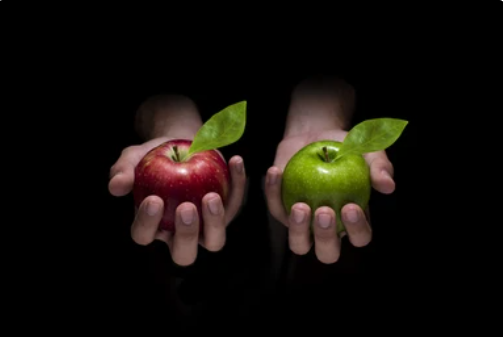It can mentally derail you with a one-two punch of envy and
shame. And yet it is surprisingly common. Learn how to recognise comparisonitis,
and how to manage it.
“All it takes is the hint of someone doing or having
something you perceived as ‘better’ than you, and it hits. A feeling takes over
– intense, blinding, gutting. Your brain starts spinning with toxic thoughts
about yourself (or others), and you are left feeling ashamed, guilty, and even worthless.”
“It is called comparisonitis. And if you have suffered from
it, you are NOT alone.” – Melissa Ambrosini, in Comparisonitis.

Why do we compare ourselves?
Comparison starts out as a positive technique.
Looking at what other people do has been essential to our
survival. As children, we learnt by observing those around us. And hundreds of
thousands of years ago, our ancestors learnt how to avoid danger by watching
who survived, why and how.
Yet too often, we turn it from a positive into a
debilitating negative.
Social media does not help. We see everyone’s highlights
reel – the best moments of their holiday, the most stylist shots of their
loungeroom, their children’s achievements – and we compare it to the worst of
our lives. As the saying goes, you are comparing your insides to everyone else’s
outsides.
Social Comparison Theory is a psychological theory that says
there are two kinds of comparison:
1. Upwards: we compare ourselves to those we think are better
than us.
2. Downwards: we compare ourselves to those we think are
worse than us, to try to make ourselves feel better.
How to manage it
In her book, Comparisonitis, author and podcaster
Melissa Ambrosini provides a four-step formula for freeing yourself from the
cycle of negative comparison. She uses the acronym ACES.
- A is for awareness: become aware that you are comparing.
Sometimes you might notice the feeling, before you realise what you are
thinking.
- C is for choose: choose a different path. Ask yourself, what
do you want to feel instead? You do not have to get stuck in the feelings of unworthiness.
- E is for eliminate, or exit or exhale: eliminate the trigger
that caused your spiral into comparison. If it was Instagram for example, then
log out and move onto something else. It is not about avoiding difficult situations
or feelings, but instead noticing them and managing them.
- S is for shift your state: take action to change your energy.
Get up and do something that lifts your spirits, such as dancing or listening
to upbeat music.
How to use comparison as a gift
Ontological Coach and founder of Being, the Change, Chyonne
Kreltszheim, suggests that the process of comparing yourself to others can be
turned into a power for good.
She says, “The gift of comparisonitis is that it tells us
what is important to us. It is a marker of our needs, values and priorities. It
is like a signal being sent up from the depths of our subconscious mind to
remind us that something we care about is at stake.”
The trick, she says, is to stay curious and ask questions so
we can learn from the feelings, and not get caught up in them.
For example, if you are feeling unsettled by a friend’s
recent promotion, ask yourself, “Why is this bothering me?”
If it is highlighting your own frustration in your current
role, you could use it as motivation to take your job to the next level.
“Use the comparisonitis to find out what you really want and
invest your energy in moving towards that,” says Kreltszheim.